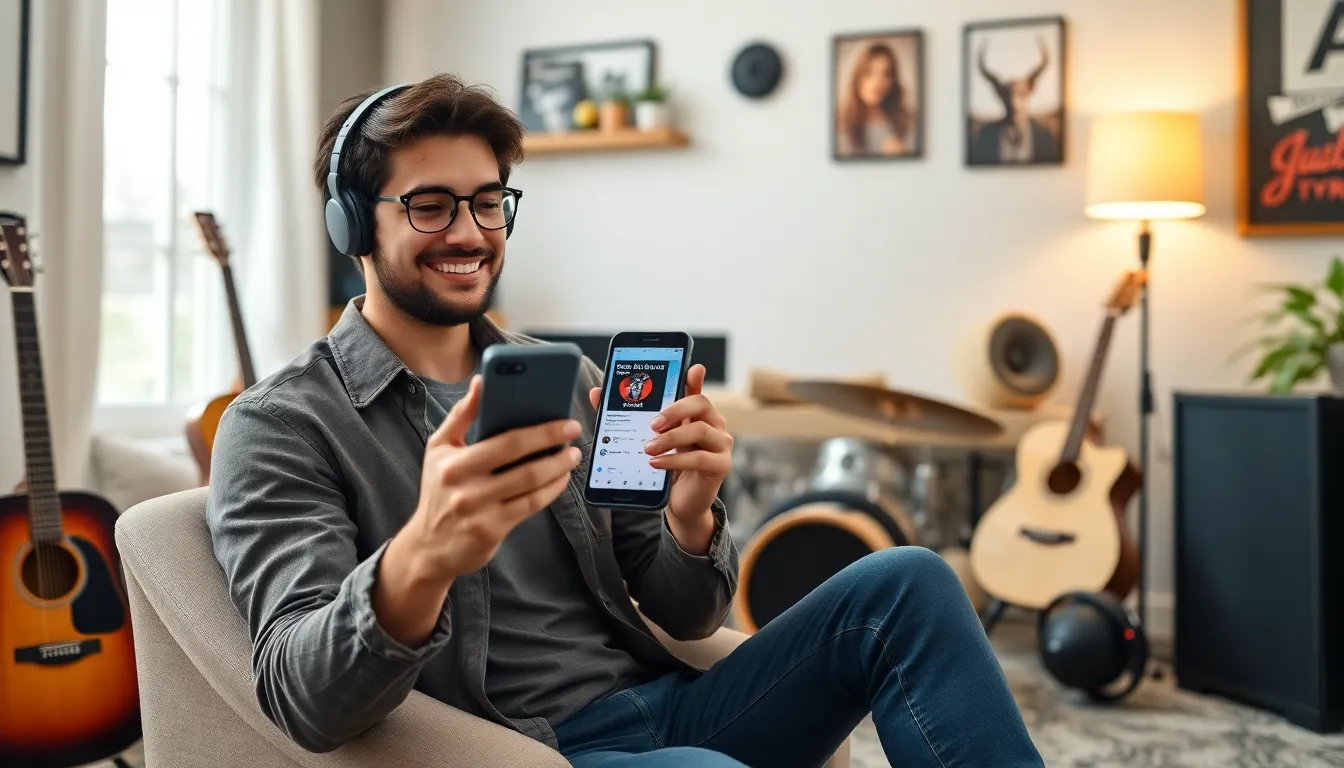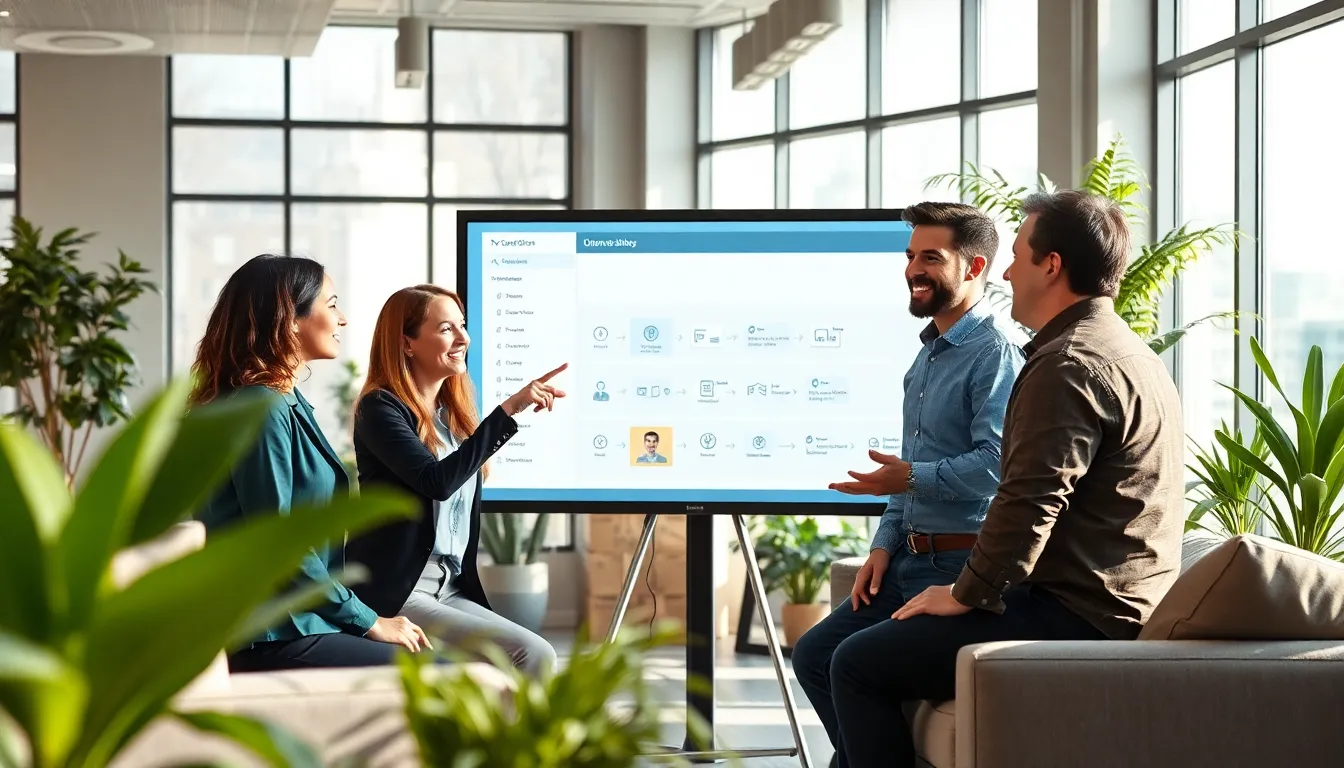In a world where silence is the enemy and playlists reign supreme, knowing how to download music to your phone is a game-changer. Imagine strutting down the street with your favorite tunes blasting, turning mundane moments into epic adventures. But let’s face it—navigating the digital music jungle can feel like trying to find a needle in a haystack.
Table of Contents
ToggleUnderstanding Music Downloading
Downloading music to a phone provides accessibility and convenience. Users can enjoy their favorite tracks anytime, enhancing personal experiences.
Types of Music Files
Music files come in various formats, each with unique characteristics. MP3 files offer widespread compatibility and decent quality. WAV files deliver high fidelity but take up more storage space. AAC files provide better sound quality than MP3 while still maintaining reasonable file sizes. Users may also encounter FLAC files, which store lossless audio data. Each type serves a different purpose, so selecting the right format depends on storage availability and sound quality preference.
Legal Considerations
Understanding legal considerations is crucial when downloading music. Copyright laws protect artists’ rights, meaning users must obtain permission before downloading tracks. Some services offer legal downloads for a fee or through a subscription model. Free platforms may provide access to licensed music, but users should verify copyright information. Failing to respect these laws can lead to penalties or fines. Responsible downloading keeps the music ecosystem thriving while supporting artists.
Methods to Download Music to Your Phone

Downloading music to a phone can enhance listening experiences. Several methods exist to access favorite tracks easily.
Using Music Streaming Apps
Music streaming apps offer convenience. Services like Spotify, Apple Music, and YouTube Music allow downloading songs for offline listening. Subscribing to a premium plan often enables users to save tracks directly to their phones. Additionally, playlists can be created and shared, making it easy to discover new music. Offline access ensures that music is available even without an internet connection.
Purchasing from Online Stores
Buying music from online stores is another viable option. Platforms such as iTunes and Amazon Music sell individual songs and full albums for direct download. Users can choose specific tracks that appeal to them, giving more control over their collections. After purchase, tracks quickly transfer to the device’s library, ensuring immediate access. Music files download in popular formats like MP3, providing compatibility with most devices.
Free Music Download Websites
Free music download websites can also provide tracks. Sites like SoundCloud or Jamendo allow users to find copyright-free music for personal use. Many independent artists share their work through these platforms, giving users access to unique sounds. Downloading songs from these sites typically supports various formats, identifying music suitable for different preferences. Always check the terms of use to ensure compliance with copyright laws before downloading.
Steps for Downloading Music
Downloading music to a phone involves a few straightforward steps tailored to the device type.
For iOS Devices
To download music on an iOS device, users can access the iTunes Store directly from their phone. First, they should open the iTunes Store app, search for the desired track or album, and tap on the price button to purchase. Once the purchase is complete, the music automatically downloads to the device. Alternatively, users can subscribe to Apple Music, allowing them to download songs for offline listening. Users must ensure they’re signed in with their Apple ID to facilitate the downloads seamlessly.
For Android Devices
Downloading music on an Android device requires a slightly different approach. Users can start by opening the Google Play Music app or any preferred music streaming service. In these apps, users can search for tracks or albums they want. After finding the specific music, they select the download option to save it to their device. Another option includes purchasing music from platforms like Amazon Music. Users then access the purchased songs through their library or designated folder for easy playback.
Troubleshooting Common Issues
Downloading music to a phone may present challenges. Addressing common issues can enhance the experience.
Storage Space Problems
Insufficient storage space often prevents music downloads. Users can check their phone’s storage settings to identify available space. Deleting unused apps or old media files frees up storage. Additionally, transferring music files to a cloud service provides extra space on the device. Sometimes, using an SD card for additional storage offers a practical solution. Managing storage space efficiently ensures users can download and enjoy their favorite songs without interruption.
Download Errors
Download errors may occur due to poor internet connections. A stable Wi-Fi connection significantly improves download success rates. Restarting the app or the device often resolves minor glitches. Checking for software updates keeps music apps functioning smoothly. Sometimes, signing out and back into the music account refreshes the user session, fixing download issues. Users should also verify that their subscriptions are active if utilizing streaming services for downloads. Taking these steps can help ensure a seamless music downloading experience.
Downloading music to a phone can significantly enhance the listening experience. With various methods available from streaming services to online stores and free music platforms, users have numerous options to access their favorite tracks.
Understanding the different music formats and legal implications is crucial for responsible downloading. By following the outlined steps and tips, users can enjoy their music without interruption.
Ultimately, having music readily available transforms everyday moments into memorable experiences, making it well worth the effort to explore these downloading options.





